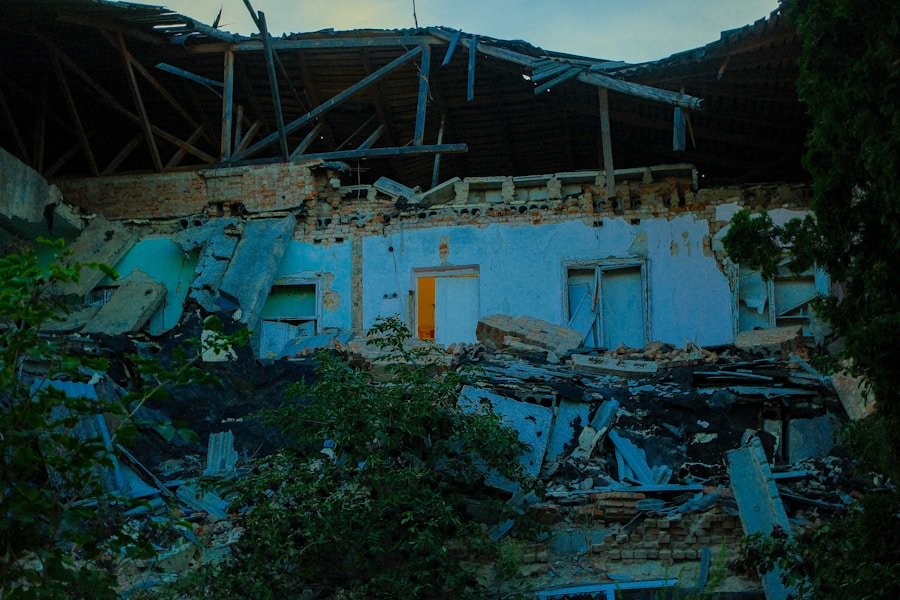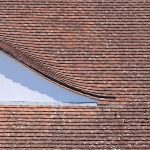
Ice dams are a common winter phenomenon that can cause significant damage to homes and buildings. They form when snow on the roof melts and then refreezes at the edge of the roof, creating a barrier that prevents water from draining properly. This can lead to water backing up under the shingles and leaking into the building, causing damage to the roof, walls, and ceilings. Ice dams are most likely to form on roofs with inadequate insulation and ventilation, as well as in areas with heavy snowfall and fluctuating temperatures.
The formation of ice dams begins with the accumulation of snow on the roof. As the sun or heat from the building warms the roof, the snow begins to melt. However, if the temperature drops again before all the melted snow can drain off the roof, it will refreeze at the edge, creating a dam. As more snow melts and refreezes, the dam grows larger, trapping more water on the roof and increasing the risk of leaks and damage. Understanding how ice dams form is crucial for preventing and addressing them effectively.
Preventative Measures: Tips for Keeping Ice Dams at Bay
Preventing ice dams requires a combination of proactive measures to minimize heat loss from the building, improve ventilation in the attic, and remove snow from the roof. One of the most effective ways to prevent ice dams is to ensure that the attic is well-insulated to prevent heat from escaping and warming the roof. This can be achieved by adding insulation to the attic floor and sealing any air leaks that could allow warm air to enter the attic space. Additionally, improving ventilation in the attic can help to maintain a consistent temperature on the roof, reducing the likelihood of snow melting and refreezing.
Another important preventative measure is to remove snow from the roof before it has a chance to melt and refreeze as ice dams. This can be done using a roof rake or by hiring a professional to safely remove the snow. By keeping the roof clear of snow, there is less opportunity for ice dams to form and cause damage. It is also important to ensure that gutters and downspouts are clear of debris and functioning properly to allow water to drain off the roof effectively. By taking these preventative measures, homeowners can significantly reduce the risk of ice dams forming and causing damage to their property.
Repairing Damage: Steps to Take When Dealing with Ice Dam-related Issues
If ice dams have already caused damage to a building, it is important to take immediate action to address the issues and prevent further harm. The first step is to remove any ice dams that have formed on the roof to allow water to drain off properly. This can be done using a roof rake or by hiring a professional to safely remove the ice dams. Once the ice dams have been removed, it is important to inspect the roof, walls, and ceilings for signs of water damage and leaks. Any areas that have been affected should be dried out as soon as possible to prevent mold growth and further deterioration.
After addressing any immediate damage caused by ice dams, it is important to take steps to prevent future issues. This may involve improving insulation and ventilation in the attic, as well as making repairs to the roof and other affected areas. It is also important to address any underlying issues that may have contributed to the formation of ice dams, such as inadequate insulation or ventilation. By taking these steps, homeowners can minimize the risk of further damage and ensure that their property is protected from future ice dam-related issues.
Insulation and Ventilation: Key Factors in Ice Dam Prevention
Insulation and ventilation play a crucial role in preventing ice dams from forming on roofs. Proper insulation helps to keep heat from escaping from the building and warming the roof, which can lead to snow melting and refreezing as ice dams. By adding insulation to the attic floor and sealing any air leaks, homeowners can reduce heat loss and maintain a consistent temperature on the roof, minimizing the risk of ice dams forming. Additionally, improving ventilation in the attic helps to remove excess heat and moisture from the space, further reducing the likelihood of ice dams.
When it comes to insulation, it is important to ensure that it is installed properly and meets recommended R-values for the climate zone. This may involve adding additional insulation to achieve the desired level of thermal resistance and prevent heat loss. In terms of ventilation, it is important to have adequate intake and exhaust vents in the attic to allow for proper airflow and temperature regulation. By addressing insulation and ventilation issues, homeowners can significantly reduce the risk of ice dams forming on their roofs and causing damage to their property.
Professional Help: When to Call in the Experts for Ice Dam Assistance
In some cases, dealing with ice dams may require professional assistance to ensure that they are addressed effectively and safely. If ice dams have caused significant damage to a building or if there are safety concerns related to removing them, it may be best to hire a professional to handle the situation. Professional contractors have the experience, equipment, and expertise needed to safely remove ice dams from roofs and address any resulting damage. They can also provide recommendations for preventing future ice dam-related issues by improving insulation, ventilation, and other key factors.
Additionally, if homeowners are unsure about how to address insulation and ventilation issues that may be contributing to ice dam formation, it may be beneficial to consult with a professional contractor or energy auditor. These experts can assess the building’s current insulation and ventilation systems and provide recommendations for improvements that can help prevent ice dams in the future. By seeking professional help when dealing with ice dam-related issues, homeowners can ensure that they are taking the most effective and appropriate measures to protect their property.
DIY Solutions: Simple Techniques for Dealing with Ice Dams
While some aspects of preventing and addressing ice dams may require professional assistance, there are also several DIY solutions that homeowners can use to deal with ice dams effectively. One simple technique for preventing ice dams is to use a roof rake to remove snow from the roof before it has a chance to melt and refreeze as a dam. This can help minimize the risk of ice dams forming and causing damage to the building. Additionally, homeowners can improve insulation in their attics by adding additional insulation or sealing air leaks to reduce heat loss and prevent snow melting on the roof.
Another DIY solution for dealing with ice dams is to improve ventilation in the attic by ensuring that there are adequate intake and exhaust vents to allow for proper airflow and temperature regulation. This can help prevent excess heat and moisture from building up in the attic, reducing the likelihood of ice dams forming on the roof. By taking these simple DIY measures, homeowners can minimize the risk of ice dam-related issues and protect their property from damage.
Long-term Solutions: Strategies for Minimizing Ice Dam Risks in the Future
In addition to addressing immediate issues related to ice dams, it is important for homeowners to consider long-term solutions for minimizing the risk of future problems. This may involve making improvements to insulation and ventilation in the attic, as well as taking steps to prevent snow from accumulating on the roof. One long-term solution for minimizing ice dam risks is to ensure that insulation in the attic meets recommended R-values for the climate zone and that any air leaks are sealed to prevent heat loss.
Another long-term solution is to improve ventilation in the attic by adding intake and exhaust vents that allow for proper airflow and temperature regulation. This can help prevent excess heat and moisture from building up in the attic, reducing the likelihood of ice dams forming on the roof. Additionally, homeowners can consider installing heating cables or snow guards on their roofs to prevent snow from accumulating in areas where ice dams are most likely to form. By implementing these long-term solutions, homeowners can significantly reduce the risk of ice dam-related issues and protect their property from damage in the future.
In conclusion, understanding how ice dams form and taking proactive measures to prevent them is crucial for protecting homes and buildings from damage during winter months. By improving insulation and ventilation in attics, removing snow from roofs, addressing immediate damage caused by ice dams, seeking professional help when needed, implementing DIY solutions, and considering long-term strategies for minimizing risks, homeowners can effectively deal with ice dam-related issues and protect their property from harm. With proper care and attention, it is possible to minimize the risk of ice dams forming on roofs and ensure that buildings remain safe and secure throughout winter.



